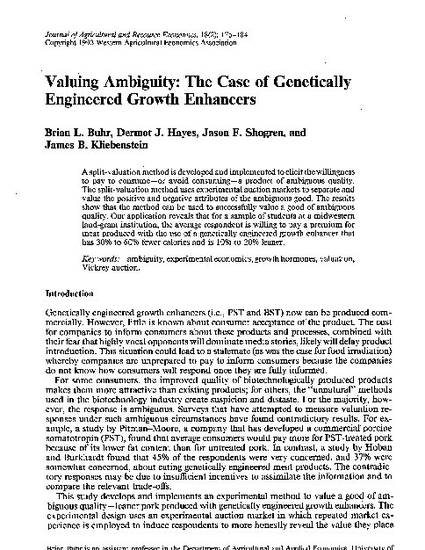
Article
Valuing Ambiguity: The Case of Genetically Engineered Growth Enhancers
Journal of Agricultural and Resource Economics
Document Type
Article
Disciplines
Publication Date
12-1-1993
Abstract
A split-valuation method is developed and implemented to elicit the willingness to pay to consume-or avoid consuming-a product of ambiguous quality. The split-valuation method uses experimental auction markets to separate and value the positive and negative attributes of the ambiguous good. The results show that the method can be used to successfully value a good of ambiguous quality. Our application reveals that for a sample of students at a midwestern land-grant institution, the average respondent is willing to pay a premium for meat produced with the use of a genetically engineered growth enhancer that has 30% to 60% fewer calories and is 10% to 20% leaner.
Copyright Owner
Western Agricultural Economics Association
Copyright Date
1993
Language
en
File Format
application/pdf
Citation Information
Brian L. Buhr, Dermot J. Hayes, Jason F. Shogren and James B. Kliebenstein. "Valuing Ambiguity: The Case of Genetically Engineered Growth Enhancers" Journal of Agricultural and Resource Economics Vol. 18 Iss. 2 (1993) p. 175 - 184 Available at: http://works.bepress.com/dermot_hayes/8/

This article is from Journal of Agricultural and Resource Economics 18, no. 2 (1993): 175–1843.